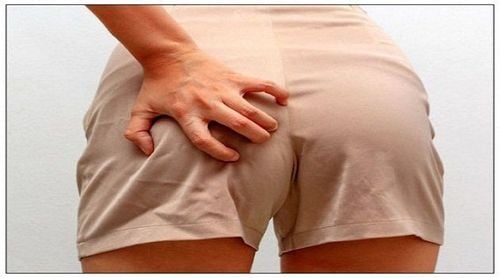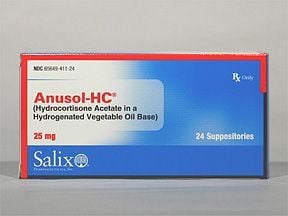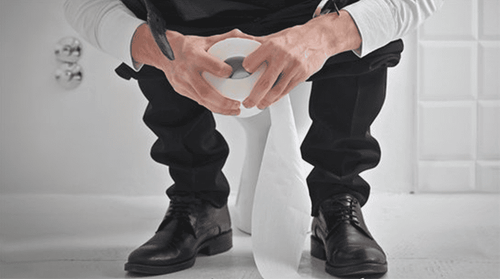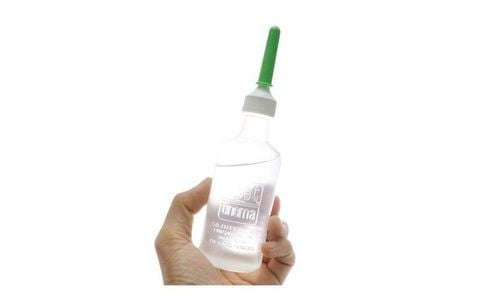This is an automatically translated article.
Anal bleeding can be a sign that you have a disease in the digestive tract, but it can also be due to diseases specific to the anorectal area such as hemorrhoids, anal fissures or malignancy. anorectal properties. Anal bleeding is characterized by bright red or dark red blood coming out of the anus. Symptoms can range from mild to severe, depending on the cause of the bleeding. This is a common problem in outpatients, however, according to some reports, less than half of patients with anal bleeding seek medical attention and treatment promptly.
1. Anal bleeding is what disease?
Anal bleeding is red bleeding from the anus, often mixed with stool that may be accompanied by blood clots. Blood in the stool can come from the rectum, anus, or other parts of the digestive tract.
The severity of anal bleeding varies widely. Most episodes of anal bleeding are mild and stop on their own. Many patients report seeing only a few drops of fresh blood, which makes the toilet water pink or blood stains on the tissue after they wipe, bleeding from the anus but no pain. In general, mild anal bleeding can be evaluated and treated in the clinic without requiring hospitalization or requiring urgent diagnosis and treatment.
Bleeding can also be moderate or severe. Patients with moderate bleeding will have more frequent or larger amounts of bright red or dark red blood often mixed with stools and/or blood clots. Patients with heavy bleeding may have multiple bowel movements or one bowel movement containing large amounts of blood. With moderate or severe rectal bleeding, patients may present with weakness, dizziness, fainting, low blood pressure, or orthostatic hypotension. Moderate or severe rectal bleeding usually requires hospitalization for emergency treatment and blood transfusion.
2. Some causes of bleeding in the anus
Anorectal disease is the most common cause of anal bleeding.
2.1 Hemorrhoids Hemorrhoids are dilated rectal veins in the anus and rectum area. Hemorrhoids often have symptoms of anal bleeding from dilated hemorrhoids, burning pain, discomfort, and itching.
Internal and external hemorrhoids in the early stages can cause anal bleeding but no pain, patients usually detect the disease when they feel a bulge in the anus when having a bowel movement.
Treatment of hemorrhoids focuses on relieving symptoms using stool softeners. In the case of thrombosed hemorrhoids, a blood clot forms in a dilated vein, causing moderate to severe pain that requires minor surgery to remove the hemorrhoid.
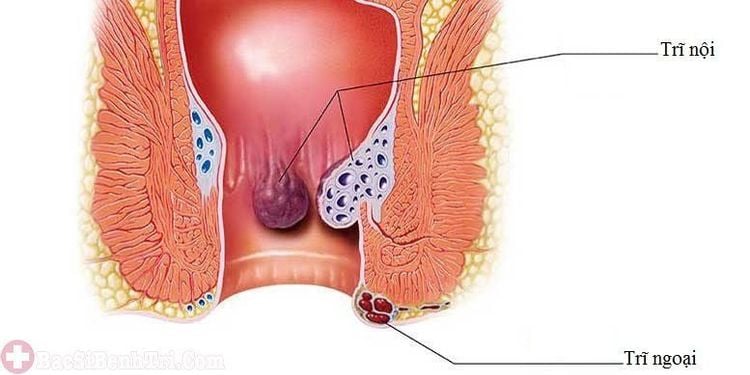
Bệnh trĩ có thể là nguyên nhân gây chảy máu ở hậu môn
2.2 Anal fissure An anal fissure is a tear in the lining of the anal canal, which is usually caused by hard stools during bowel movements.
Anal fissures can cause light bleeding from the anus, which is usually bright red. The mucosa is torn, exposing nerves and blood vessels, resulting in moderate to severe pain. Pain increases with bowel movements and then subsides between bowel movements.
With hemorrhoids and anal fissures, symptoms often improve with the use of stool softeners, increased fiber in the diet, use of pain relievers, and frequent warm baths.
2.3 Infection Dysentery is caused by bacteria with diarrhea with blood in the stool. Pathogens include Campylobacter jejuni, Salmonella, Shigella, Escherichia coli and Clostridium difficile.
Symptoms include abdominal pain, fever and bloody diarrhea. The disease is usually treated with antibiotics.
2.4 Inflammatory bowel disease (IBD) Inflammatory bowel disease is a common cause of anal bleeding in adults, usually under age 50. Two common types of inflammatory bowel disease include Crohn's disease and ulcerative colitis.
Bleeding occurs with small to moderate amounts of bright red blood in the colon, often mixed with stool and mucus. Hospitalization is optional. However, rest and steroid medication are often indicated for treatment.
2.5 Angiodysplasia This is a vascular condition involving enlarged veins and capillaries in the wall of the gastrointestinal tract, most commonly in the right colon. These blood vessels become fragile and can bleed.
Anal bleeding is usually slow, chronic, and not apparent until massive bleeding occurs. Patients often complain of weakness, fatigue, dyspnea, and anal bleeding but no pain.
2.6 Diverticulosis Diseases Diverticulitis are small pouches in the wall of the colon that usually occur in weak spots where blood vessels penetrate the muscle layer. Over time, the blood vessels in the walls of these sacs become hard, prone to rupture, which can cause bleeding.
2.7 Tumors in the colon and rectum Both benign and malignant tumors frequently occur in the colon and rectum. People over the age of 50 are most affected. However, tumors also appear in younger people. When there is a hemorrhagic complication in the tumor, it is usually slow, chronic, and small in volume.
If the cancerous lesions are advanced, you may experience other symptoms such as weight loss, change in stool volume, feeling of fullness in the rectum or constipation. Diagnosis is confirmed by colonoscopy with biopsy.
2.8 Upper Gastrointestinal Source Another common source of anal bleeding is bleeding from the upper gastrointestinal tract, usually the stomach or duodenum, with the common symptom of melena. However, excessive bleeding can cause bright red blood in the stool.

Có nhiều nguyên nhân khác nhau có thể gây tình trạng hậu môn chảy máu
3. What is the medical treatment for anal bleeding?
The treatment of rectal bleeding depends on the cause and source of the bleeding. Regardless of the site of bleeding, if the patient has significant blood loss, treatment should be initiated by stabilizing the patient. Hospitalization is required if bleeding has not stopped, or if the patient's vital signs are abnormal.
Other treatment options will depend on the suspected cause of bleeding. A gastroenterologist, gastroenterologist, or ulcerative colitis specialist will likely be involved in the treatment plan.
4. Home remedies for anal bleeding
If the anus is bleeding in small amounts, the cause is determined to be hemorrhoids or anal fissures. Hospital treatment is considered by the doctor.
Home treatment may include the use of ointments and suppositories. People can buy these over-the-counter medicines without a prescription. If the patient's symptoms do not improve within a week of treatment, or the person is over 40 years of age, a physician should be consulted for further evaluation.
Simple home care for anal bleeding includes:
Drink 8-10 glasses of water a day. Shower daily to clean the skin around the anus. Increase fiber in the diet. Avoid going to the toilet for too long. Take a dip in the tub. This is a warm bath with just enough water to cover the hips and buttocks, which can help relieve some of the itching, pain, and discomfort of hemorrhoids. Limit alcohol intake, as alcohol contributes to dehydration, which is one of the causes of constipation. Anal bleeding can be a sign of a disease in the digestive tract, but it can also be due to diseases specific to the anorectal region such as hemorrhoids, anal fissures or malignancy rectum rectum. Depending on the cause, anal bleeding may or may not be painful. If this condition can be improved with the cause of constipation due to habits and nutrition, then there is no need to go to the hospital for treatment. However, if anal bleeding is accompanied by dangerous complications, the patient should soon go to medical centers for examination and treatment.
Please dial HOTLINE for more information or register for an appointment HERE. Download MyVinmec app to make appointments faster and to manage your bookings easily.




